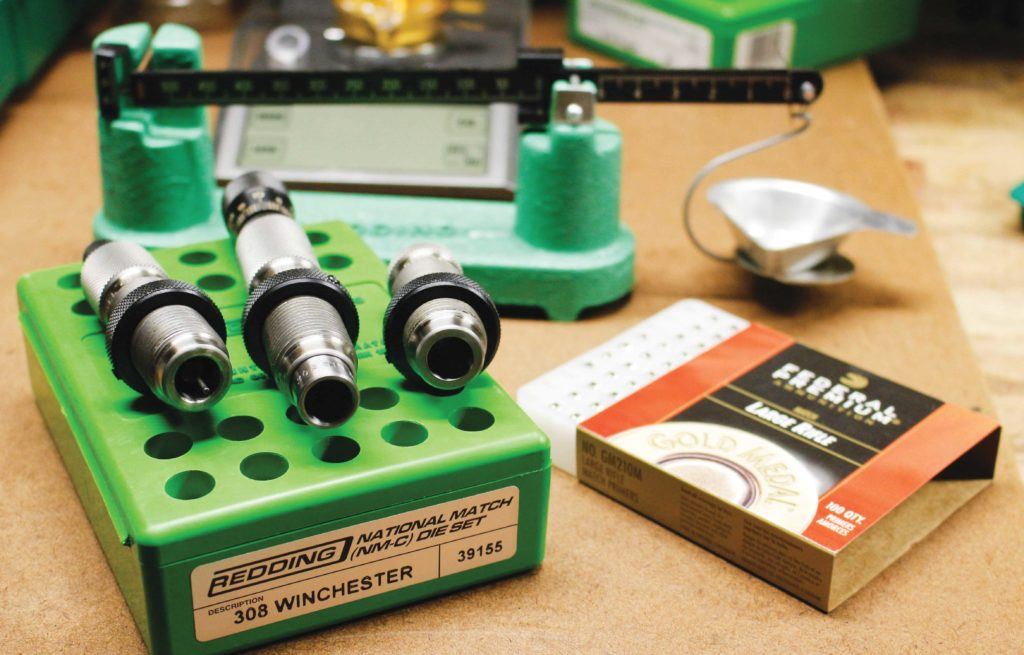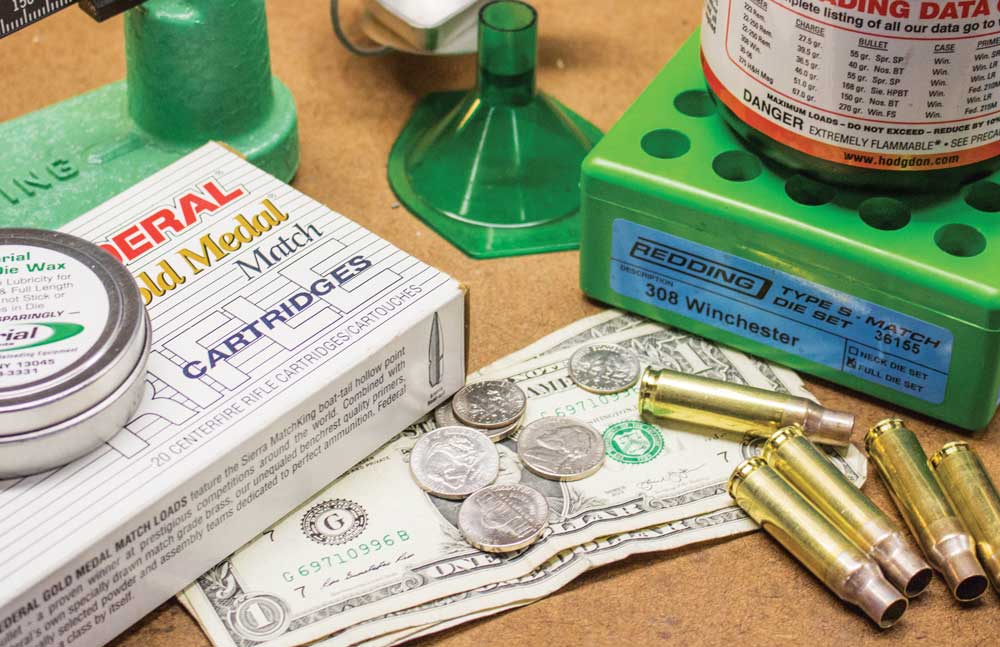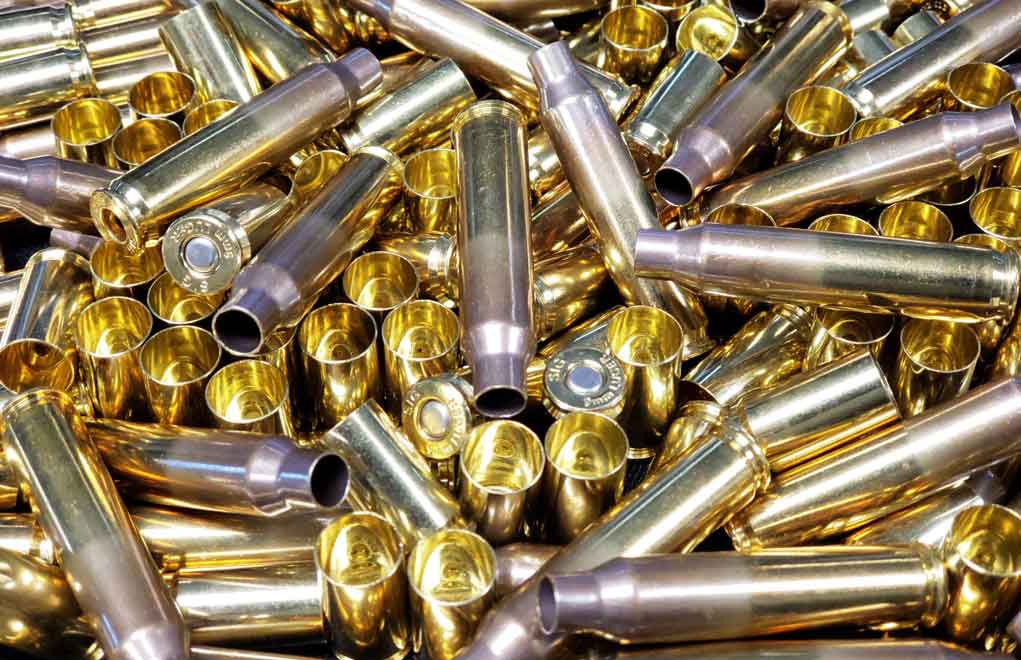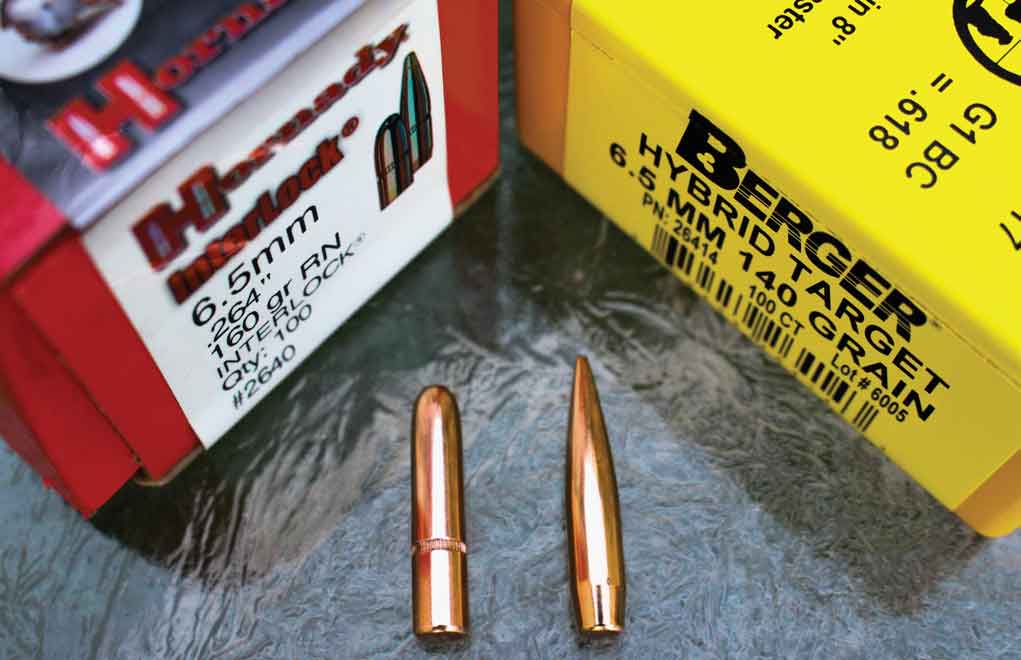
Measuring the true value of reloading entails much more than calculating the cost per round.
Is it still worth the investment?
- Over the years, factory-loaded ammo has become competitive with handloaded ammo.
- For some cost isn't an issue and the value of reloading is found in other factors.
- Accuracy, consistency, reliability and the quality control inherent in reloading are priceless.
- It also opens the door to utilizing cartridges not embraced by ammo makers.
- Additionally, when there is an ammo drought reloading gives you peace of mind.
There was a time, not too awful long ago, where one of the best virtues of reloading ammunition was the economic value — it was simply cheaper to roll your own than it was to buy the premium ammunition. That was the era in which I was raised, and it held true for quite some time. However, I believe the winds of change have blown, and in certain instances that economy may no longer be the case. So, it begs to ask: Is reloading still worth the effort?

I suppose the correct answer — for you, the reader — will depend on your shooting habits and chosen firearms.
- Are you a high-volume pistol shooter?
- Do you enjoy a volume of rounds placed downrange over a few, precisely placed shots with your hunting rifle?
- Does long-range competition tickle your fancy?
- Is it sporting clays that excites you?
The answers to these questions may lead you in different directions with regard to reloading.
I went a decade, maybe more, without using a single round of factory ammunition in one of my centerfire rifles. I was undoubtedly down the rabbit hole, and I spent an exorbitant amount of time honing my reloading skills, thus developing many different opinions on reloading components — especially powder and projectiles — as well as different cartridges.
I wasn’t exactly a high-volume shooter, as most of my rifles were bolt-action hunting rifles, and precision was the name of the game. I knew I was making the best available ammunition — for these rifles, anyway — and the cost was a moot point. I simply wanted to handload for my guns, and that was that.
Horizons Expanded
Trying some rifles chambered for different cartridges, which happened to come with high-quality ammunition, my eyes were opened as to how drastically factory ammunition had changed. Undoubtedly, the factory ammunition of today has far surpassed anything our fathers and grandfathers could buy, in precision, selection and performance. It's reliable, affordable (to a certain degree) and easy … and it requires no more than the time and money to purchase it. Most premium bullets are available from one ammunition manufacturer or another, if one looks hard enough, so the choices are more than we’ve ever had.
If you boil it down to the price per round, especially for high-volume pistol and AR-platform shooters, when you compare the cost of the bulk factory ammunition to the time and cost of producing your own, the bulk ammunition will win out. But still there are several things about reloading that make it a worthwhile activity for the high-volume shooter.

There’s a definite investment when it comes to purchasing reloading tools, not to mention the cost of powder, primers, cases and projectiles, or shotshells and shot. It is and always will be a labor of love, but that labor is fruitful — extremely fruitful in many ways.
Once the initial investment has been made, assuming you’ve purchased the best tools you can afford, little other than components will be costly. And what you receive for your effort can be difficult to quantify. Accuracy, consistency and reliability, and the ability to control all the parameters of your ammunition can be priceless in certain situations — and it can be paramount when it comes to precision shooting.
Seating depth, velocity and bullet choice — perhaps you have embraced a cartridge that the ammunition companies haven’t given much attention to — may all be custom-tailored to your rifle, and that’s most definitely a good thing. I’ve only seen one or two instances where a particular rifle would shoot factory ammunition better than any handload I could cook up, and that alone is a testament to the capabilities of handloaded ammunition.
Backup Ammo
If you’re a hunter who travels, you've probably heard horror stories of ammunition lost by the ever-diligent airlines. I recommend trying to find at least one common factory load that can be obtained easily and that will work in your rifle. Perhaps it doesn’t shoot ¼ MOA, but you can still go hunting.
I’ve used handloaded ammunition all around the world (I’m knocking wood while type this), and my rifles and luggage always showed up in time to hunt. But I’m the kind of guy who likes to hedge my bets, either through an available factory load or arranging a backup rifle in camp. If you generally stay close to home, you won’t have an issue hunting with your handloaded ammo.
Measuring Value
Let’s take a look at the cost breakdown for a box of ammunition, and while this is only one possibility, it should give you an idea of the financial layout. I’ll use the common .308 Winchester, loaded with 168-grain Sierra MatchKing bullets for the target shooter.

A box of 20 cartridges, as loaded in the Federal Premium Gold Medal Match line, has a street price of about $23, or $1.15 per round.
Were you to handload the same cartridge, you’d need the components as follows:
- Federal Gold Medal Match primers are about $40 per 1,000, or $0.04 per primer.
- Sierra 168-grain MatchKing bullets are $37 per 100, or $0.37 per projectile.
- The Federal Gold Medal Match cases cost $22 per 50 pieces, or $0.44 per case.
- This cartridge will consume roughly 44 grains of powder per shot, so using the popular IMR4064 powder, which comes at a price of about $30 per pound (there are 7,000 grains to the pound), and will cost about $0.19 per shot.
Add this all up, and you’ll see a price per round of $1.04. Add to that the cost of the reloading tools (which will eventually be recouped, though it might take a while), and you’ll probably agree that the factory ammunition is the better value, especially given the overhead costs.
However, value isn’t always measured in dollars and cents — customization and pride also matter.
Does that ammunition perform in your rifle or pistol? More importantly, will it be readily available? In the current market ammo is plentiful, but we can all remember the market just five years ago where shelves were empty and prices skyrocketed. I like to know that I can create my own ammunition — which has been proven in my own rifles — in spite of a drought, though I’ve seen reloading components become scarce as well. Brass cases can be reused, cutting down costs a bit, but the powders and primers — and most of the time, the projectiles — will need to be procured.
While the .308 Winchester is a common cartridge and, like the .30-06 Springfield and .223 Remington, it’s available at a reduced cost because of sheer volume, the financial comparison above may skew the decision in another direction if you shoot a different cartridge.

Looking at common street prices, a box of .300 Holland & Holland cartridges can range from $50 to $85, and I know I can make them for considerably less than that. The big bore safari rifles can easily exceed that; .416 Rigby cartridges can cost $5–$10 each, and the .470 Nitro Express can run as much as $18 per shot! I know that I will need to handload for the big sticks if I want to do an appreciable amount of practice with my safari guns.
Final Thoughts
In the end, I’m a handloader for several reasons: I thoroughly enjoy the hobby, and getting together with a couple buddies to cook up a new load for whatever rifle we’re working on has made many great memories. I love the experimentation and the challenge of finding a load for a particular troublesome rifle. I like the pride and self-reliance of being able to hunt and shoot with my own brand, it’s a source of pride almost as strong as making the shot itself.
Do I handload for high-volume shooting, say pistol practice, or short-distance drills with an AR? No, I don’t — this is one area where the bulk factory ammo is a great value. I’ve handloaded for at least some portion of every safari I’ve been on, and I hunt locally with handloaded ammo more often than not. While the best reloading tools are certainly costly (note that I do not say “expensive” because they’re worth the money spent), the end result is well worth the effort.
Buy the best you can, and spend more time with and around cartridges and firearms.
Editor's Note: This article originally appeared in the July 2018 issue of Gun Digest the Magazine.

Next Step: Get your FREE Printable Target Pack
Enhance your shooting precision with our 62 MOA Targets, perfect for rifles and handguns. Crafted in collaboration with Storm Tactical for accuracy and versatility.
Subscribe to the Gun Digest email newsletter and get your downloadable target pack sent straight to your inbox. Stay updated with the latest firearms info in the industry.

![Best Concealed Carry Guns In 2025 [Field Tested] Wilson Combat EDC X9S 1](https://gundigest.com/wp-content/uploads/Wilson-Combat-EDC-X9S-1-324x160.jpg)


![Best 9mm Carbine: Affordable PCCs [Tested] Ruger Carbine Shooting](https://gundigest.com/wp-content/uploads/Ruger-Carbine-Shooting-100x70.jpg)
![Best AR-15: Top Options Available Today [Field Tested] Harrington and Richardson PSA XM177E2 feature](https://gundigest.com/wp-content/uploads/Harrington-and-Richardson-PSA-XM177E2-feature-100x70.jpg)

It’s great that you talked about how reloading would give you peace of mind when there is an ammo drought. I was talking with my uncle yesterday and he recommended reloading ammos to me. It seems pretty interesting so I’d like to try it out, but first, I need to get some supplies for it, like 9mm brass.
https://precisionbrass.net/product/9mm/
When you calculate the reloading question one really has to consider what their time is worth otherwise I would invite that person to come mow my lawn, change my oil , be my cook or mop my floors for free. I will include all parts, tools and material, all you need to do is supply your value-less time without cost to me! So factoring in what your time is worth then only at the lower socioeconomic strata would reloading be worth it.
Consider the liability and risk you take on if anything goes wrong, the time, dedication and resource requirements reloading not only doesn’t make any economic sense, but seems to be a solution looking for a problem if not looking for trouble outright. With modern ammo so good and so cheap, why bother?
I would like to mention that the purchase of brass for .308 is a fairly infrequent cost, if you subtract that cost, then the second, third, fourth, …., n-th time will save you $0.44 per round. That’s a significant savings. I think your comparison fails in this regard. Just on brass, that’s $440 dollars in savings per 1000 reloads after the first initial batch. Yes equipment overhead slow down savings in the early days, but over a period of 10 years, for a mid-volume shooter, there are some serious savings to be had. By saving my brass, I load .223/5.56 for about $0.17 a round. There is no place on the internet or gun show that i can find 22-cal AR ammo for that price, and at those (my) exacting standards. Best i’ve found, on average is $0.27 per round. that’s $.010 per round savings, and $100 per 1000. Since 22-cal AR ammo tends to be a higher volume round for most shooters, this amounts to quite a bit. All it takes is some initial upfront investment and elbow-grease….and half a brain. And if you think about it, it fits the adage “Takes money to make [or save] money”